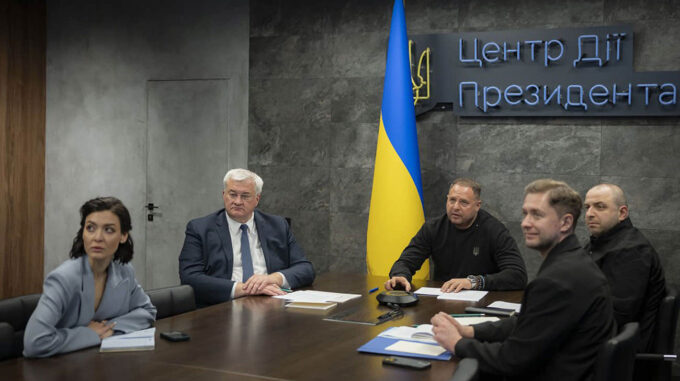Kyiv has intensified diplomatic efforts to find ways to cease fire: new negotiations with the USA and European countries

On Tuesday, May 7, Ukrainian authorities held important online meetings with representatives of leading Western states as part of efforts to implement a stable and unconditional ceasefire on Ukrainian territory. This marked another step by Kyiv in its diplomatic campaign aimed at achieving long-term peace and preventing further escalation of the conflict. According to reports, key diplomatic figures from the United States and several European countries were invited to participate in the negotiations. Ukraine was represented at these meetings by Defense Minister Rustem Umerov, Foreign Minister Andrii Sybiha, Head of the President’s Office Andrii Yermak, his deputy Ihor Zhovkva, as well as advisers to the Head of the Presidential Office Daria Zarivna and Oleksandr Bevz. At the same time, foreign colleagues also took part in the negotiations alongside the Ukrainian side. From the American side, U.S. President's special envoys Steve Winhoff and Keith Kellogg participated in the talks. They focused on finding ways to achieve an unconditional and complete ceasefire, and discussed possible diplomatic pressure tools on Russia in case of refusal to adhere to agreements. An important part of the meeting was the discussion of prospects for implementing a moratorium on hostilities for at least 30 days, which should become a first step toward stable peace. French diplomatic advisor Emmanuel Bonne, as well as UK Prime Minister’s National Security Adviser Jonathan Powell and their colleagues from Germany, and representatives of the European Council and European Commission, participated in discussions regarding the conditions and possible mechanisms for monitoring compliance with the new agreements. There was also discussion about applying additional legal and economic instruments to incentivize Russia to fulfill its commitments. From the Ukrainian side, the main goal of the negotiations was emphasized — the implementation of an unconditional and complete ceasefire on Ukrainian territory for at least thirty days. As the Head of the President's Office Andrii Yermak stated, this step is fundamental for opening the next stages of the negotiation process and should serve as the first stage in achieving just and sustainable peace. It is important to note that this initiative is separate from and in addition to Moscow’s response to the proposal for a three-day ceasefire, which Ukrainian diplomats say has solely internal purposes — ensuring the security of the Moscow parade. In context, it is worth mentioning that during the negotiations, possible scenarios for international community responses in case Russia refuses to accept Kyiv’s proposals or breaches them were discussed. Various leverage points—diplomatic, economic, and political—are expected to be used to reduce risks of further escalation and to incentivize Russia to fulfill its commitments. Overall, these negotiations demonstrate Ukraine’s persistent diplomatic policy aimed at seeking peace and stability amidst a prolonged conflict. In light of Ukrainian objectives, the idea of establishing a three-day or 30-day ceasefire is supported by many Western leaders, although there are varying assessments of its feasibility and effectiveness. U.S. President Donald Trump expressed his opinion regarding Vladimir Putin’s proposal for a short-term ceasefire, stating that three days is “a very long time,” which significantly differs from events of previous months. In contrast, UK Prime Minister Rishi Sunak and French President Emmanuel Macron urged Russia to agree to a longer — at least 30 days — ceasefire period, considering it an important step toward diplomatic resolution of the conflict and preventing escalation. Further consultations and negotiations are expected to be crucial for forming a common international community position and could have a decisive influence on the possible achievement of a genuine and lasting peace in Ukraine.

